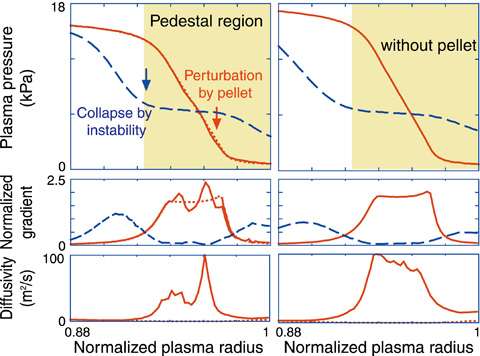
Fig.4-26 Profile evolution when a pellet is injected during an increase in pressure gradient in pedestal region (left) and when no pellet is injected (right)

Fig.4-27 Temperature profile evolution in core/pedestal regions (top) and in front of divertor plate (bottom)
In fusion plasmas, many phenomena interact, resulting in complex behavior that must be understood and controlled. To do so, we divide the tokamak plasma into three regions: the core, the pedestal and its peripheral divertor regions. Then, for each region, we developed physical models for plasma heat/particle transport, instabilities, and so on. We then combined the models to obtain an integrated model that covers the entire region from the core to the divertor; such a complete model is required for self-consistent evaluation of the entire plasma. By using this model, we clarified the various behaviors discussed below, thereby contributing to the design of ITER, JT-60SA, and DEMO.
(1) Core model development and integration. The radial transport of alpha particles, enhanced by instabilities induced by alpha particles themselves, was modeled and included in a core integrated code. We evaluated the reduction of fusion performance in ITER. We developed a plasma rotation model and clarified the mechanism of rotation driven by alpha particles. Then, we evaluated the plasma rotation in DEMO. We developed a pinch model of high-Z impurity and found large inward pinch when the plasma rotates in the direction opposite to that of the plasma current. Using this model, we succeeded in explaining Tungsten accumulation in JT-60U experiments, which had been an unresolved issue.
(2) Pedestal model integration. We developed a pedestal integrated code by coupling the core integrated code with an instability code, a model of solid pellet injection, and a simple divertor model. This model clarified the onset mechanism of the instability induced by the pellet, and it showed reduced energy loss by the pellet-induced instability (Fig.4-26). These results can serve as a guide to reduce the heat load on the divertor plate in ITER.
(3) Integration of entire plasma region. We coupled the core integrated code with a divertor integrated code composed of plasma fluid code and neutral/impurity Monte Carlo code, instead of the above simple divertor model, and developed an integrated code that can treat the entire plasma region self-consistently. The code enabled us to clarify the dynamics of the entire plasma (Fig.4-27) and to study detailed operational scenarios that would yield high performance in the core plasma compatible with low heat load on the divertor plate.